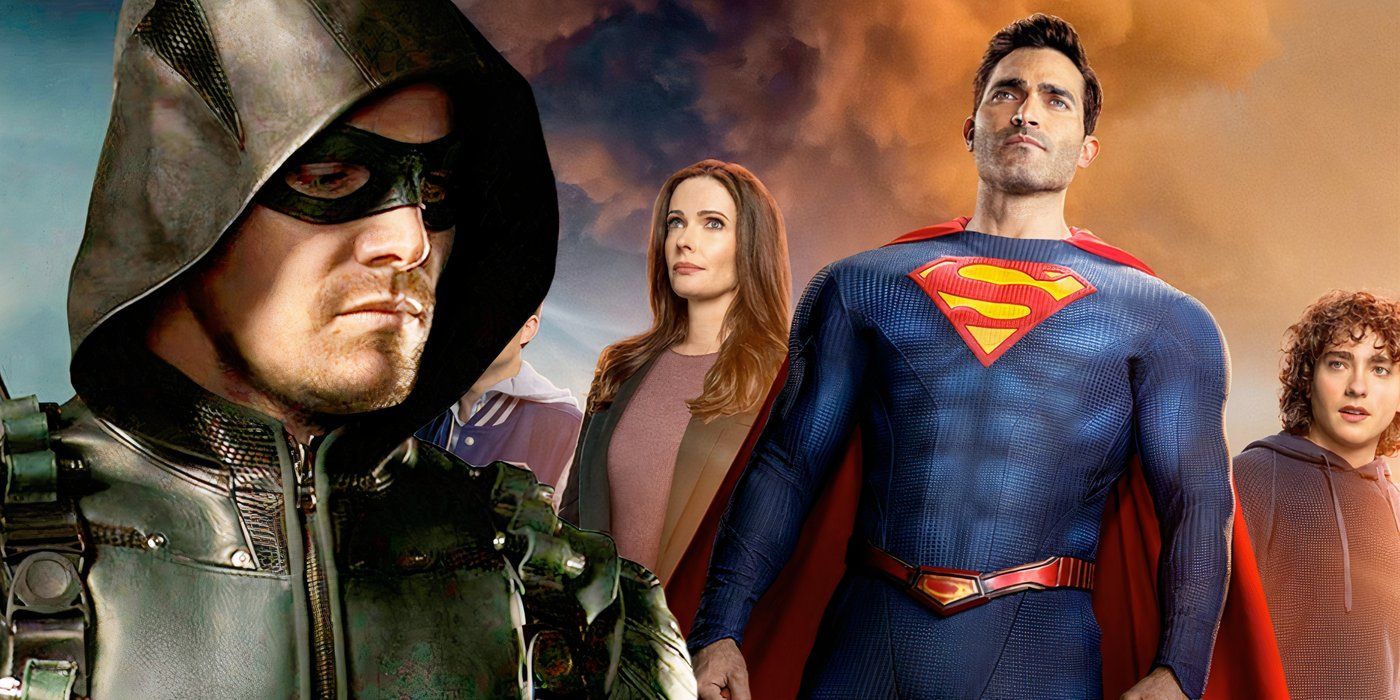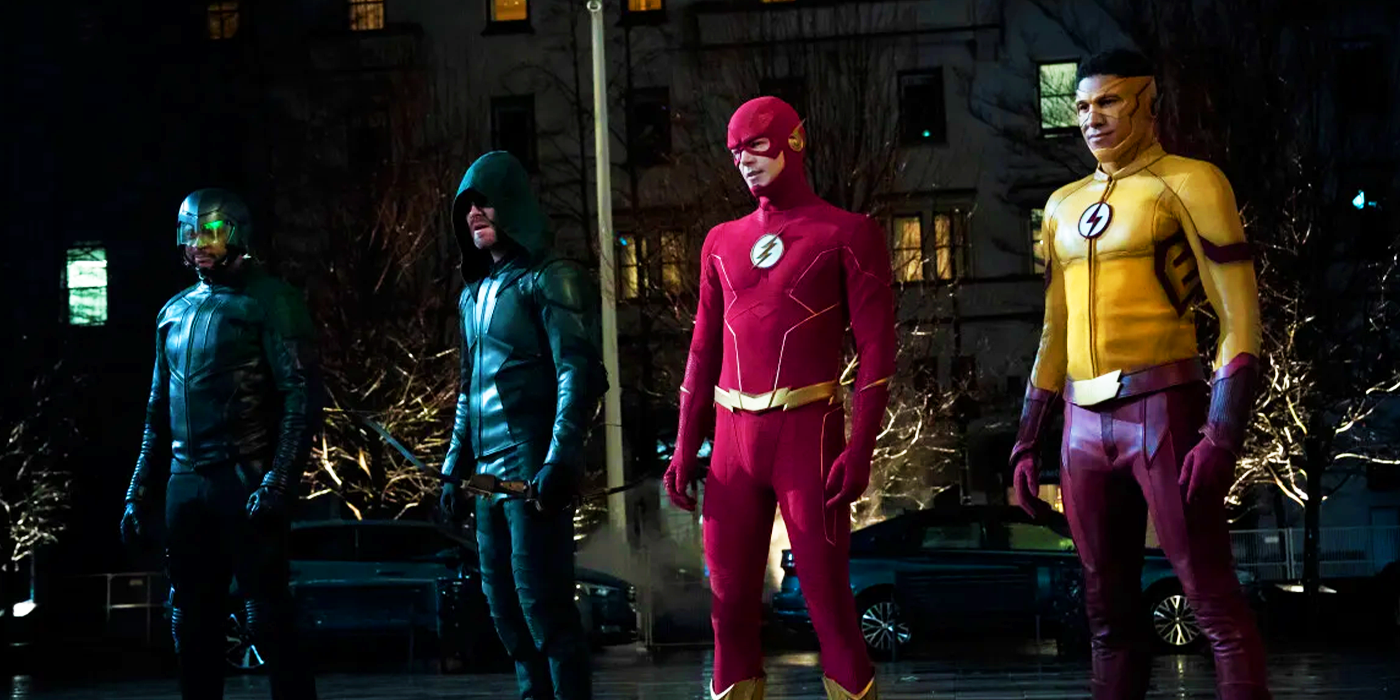
The Arrowverse refers to the interconnected universe of DC superhero shows that began with Arrow, which debuted on The CW in 2012. New shows like The Flash, Supergirl, Legends of Tomorrow, Batwoman, and Black Lightning were introduced. These series not only expanded the roster of heroes but also deepened the lore of the universe, introducing multiverse concepts, crossovers, and story arcs that spanned multiple shows. Massive crossover events like Crisis on Infinite Earths and Elseworlds became major television events, uniting characters across the Arrowverse in thrilling and dynamic ways.
The CW’s Final Arrowverse TV Show Has Officially Ended
Superman & Lois Concluded The Arrowverse

The Arrowverse officially ended with Superman & Lois season 4, episode 10. The thrilling final episode saw Superman rematch against Doomsday, defeat Lex Luthor, and even meet Krypto, the superdog. The bombastic and emotional finale was a triumphant swansong to Superman & Lois and, indeed, the entire Arrowverse.
Superman & Lois had separated itself from the core Arrowverse shows by establishing a distinct tone and narrative focus. It often emphasizes the family dynamics of Clark Kent and Lois Lane. While the show maintained a strong critical reception, its ending symbolizes the final chapter of the franchise that once dominated The CW’s lineup.
This conclusion follows a series of cancelations and finales for other Arrowverse shows. Legends of Tomorrow ended in 2022, Batwoman was canceled the same year, and The Flash, the last mainline Arrowverse show, aired its final episode in 2023. With Superman & Lois gone, The CW has officially bid farewell to its superhero era.
The Arrowverse’s Main Universe Ended In 2023 With The Flash
Superman & Lois Is Set In An Adjacent Universe

Although Superman & Lois was the last Arrowverse-related show to end, the Arrowverse’s core universe concluded with the final season of The Flash in 2023. During its final season, The Flash delivered an emotional farewell, featuring cameos from Arrowverse alumni and resolving long-standing storylines. It served as a definitive ending for the Earth-Prime timeline, the main continuity shared by Arrow, Supergirl, and other core Arrowverse shows.
Superman & Lois, while initially connected to the Arrowverse through its introduction in Supergirl, was revealed to be set in a separate universe within the multiverse. Superman & Lois’s titular stars, Tyler Hoechlin and Elizabeth Tulloch appeared as Clark Kent and Lois Lane in Supergirl and The Flash. However, COVID-19 restrictions and the cancelation of another crossover event prompted Warner Bros. to keep Superman & Lois in a separate continuity. This was confirmed in season 2 through the multiverse, but the series was borne out of the Arrowverse’s mighty crossovers.
This distinction allowed Superman & Lois to develop its own mythology, unburdened by the events of Earth-Prime. However, its ties to the Arrowverse were never fully severed, and it continued as a spiritual successor to the franchise. With its conclusion, the Arrowverse multiverse is now completely dormant.
Why The Arrowverse Was Such An Important DC Franchise
The Arrowverse Has Been The Most SUccessful DC Franchise










The Arrowverse’s significance in the superhero genre cannot be overstated. Over its 12-year run, the franchise introduced millions of viewers to DC Comics characters who had long been overshadowed by the likes of Batman and Superman. Shows like Arrow and The Flash turned Green Arrow and Barry Allen into household names, while Supergirl and Black Lightning brought diverse perspectives and representation to the forefront of superhero storytelling.
Before the Arrowverse, characters like Green Arrow were niche figures in the DC Comics pantheon. Arrow transformed Oliver Queen into a compelling protagonist, blending action, drama, and moral dilemmas into a formula that resonated with viewers. Similarly, The Flash introduced audiences to Barry Allen’s heartwarming origin story, endearing his optimism and heroism to fans around the world.
Supergirl, which premiered in 2015, was a game-changer for the Arrowverse. The show placed Kara Zor-El, Superman’s cousin, front and center, exploring themes of female empowerment, immigration, and acceptance. It was one of the first major superhero series to feature a female lead in the modern era, paving the way for greater representation in the genre.
The Arrowverse also broke barriers with its depiction of LGBTQ+ characters. Batwoman introduced the first openly lesbian superhero to headline her own show, while Supergirl featured significant storylines about coming out and acceptance. These narratives resonated with audiences who had long been underserved by the mainstream superhero media and the DCEU timeline.
One of the Arrowverse’s greatest achievements was its embrace of the multiverse. Shows like Legends of Tomorrow and crossovers such as “Crisis on Infinite Earths” explored alternate versions of characters, bringing together heroes from different timelines and universes, with some thrilling cameos as a result – including Kevin Conroy as Batman. These events not only expanded the Arrowverse’s scope but also honored DC Comics’ rich history by incorporating Easter eggs and nods to past adaptations.
“Crisis on Infinite Earths,” in particular, was a groundbreaking event that united nearly every Arrowverse series while paying homage to earlier DC properties, including Smallville and the 1966 Batman series. By weaving these disparate worlds together, the Arrowverse celebrated the legacy of DC Comics while creating a cohesive narrative tapestry. It was a landmark television event that expertly juggled several major shows and narratives.
The Arrowverse’s success paved the way for other shared universes, proving that interconnected storytelling could work on television. Its influence can be seen in later projects like HBO Max’s Peacemaker and Marvel’s Disney+ series, which have embraced serialized formats and character-driven narratives. Beyond its storytelling achievements, the Arrowverse inspired countless viewers to explore the source material. Many who were introduced to Green Arrow, The Flash, and Supergirl through the shows went on to read their comic book adventures, contributing to a resurgence of interest in these characters.
While the franchise has officially ended, its legacy endures and even outperforms DC’s cinematic counterpart. The Arrowverse demonstrated the potential of superhero television and left an indelible mark on the genre. For 12 years, it gave audiences a universe to believe in, one where hope, justice, and teamwork could prevail against even the darkest odds.




